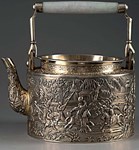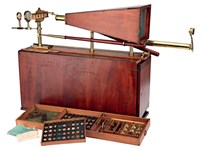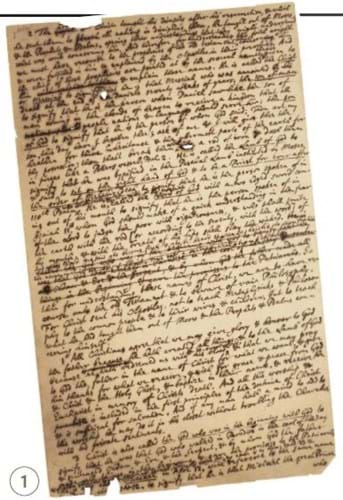
Towards the end of his life, Isaac Newton (1642-1727) had remarked to John Conduitt, the executor of his estate and papers, that “when he died, he should have the comfort of leaving [Natural] Philosophy less mischievous than he found it”.
Conduitt had replied that “he might say the same of revealed religion”.
Newton, a devout Christian, deemed his theological research “a duty of the greatest moment” and as important as his Opticks and the Principia. In his later years he wrote (but did not publish) his most important statement on God and Christianity, an Irenicum that supported the moderate position of the Latitudinarians.
His biographer Scott Mandelbrote has written that Newton assembled “the tenets of Christianity which he believed were shared with the first religion of men, that of Noah and his sons”, in the hope “that such analysis could solve problems of religious dispute, just as the Principia had settled questions of natural philosophy”.
The primary manuscript for Irenicum or Ecclesiastical Polyty tending to Peace resides at King’s College, Cambridge, but included in a Bonhams New York (28/27/21/14.5% buyer’s premium) online sale of Fine Books & Manuscripts on June 22 was a page of text that expanded on this earlier draft.
Dated c.1720, the 71 lines affirm Newton’s belief that the simple worship on which “all Christians agree” is itself “sufficient to salvation”. In an explicit gesture toward religious tolerance, he adds that “if any man hath a mind to add to this worship he may do it in his closet without troubling the Churches with his private sentiments”.
The manuscript passed by descent from Catherine Barton (1679-1739) until it was sold as part of the famous Portsmouth Papers at Sotheby’s in 1936.
In purely commercial terms this was not going to generate the same interest as an autograph letter referencing Newton’s towering breakthroughs in the natural sciences. So, when bidding closed on May 4, it brought what in relative terms was a modest $45,000 (£35,450).
Message to Pepys
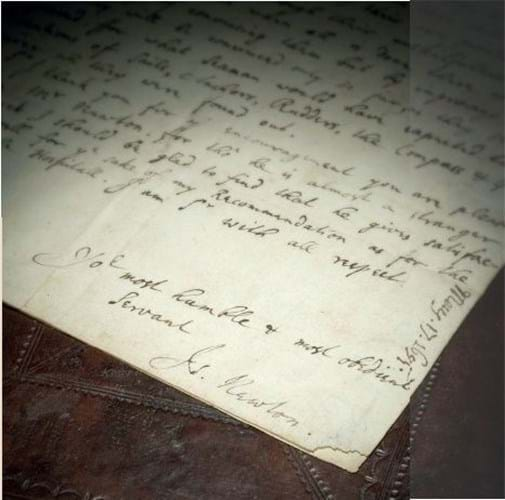
One of only surviving five letters Newton wrote to Samuel Pepys, £150,000 at Bonhams Knightsbridge.
This was one of two Isaac Newton autograph manuscripts offered at auction in as many months.
An entirely new discovery offered by Bonhams Knightsbridge (28/27/21/14.5% buyer’s premium) on June 21 was one of only five surviving letters he wrote to another of the great figures of the age, Samuel Pepys.
Pepys’ diaries (1660-69) end some years before he and Newton first met. Their earliest recorded meeting was in January 1692, with Newton a guest in Pepys’ home two days after the funeral of Robert Boyle.
Written on May 7, 1695, this letter is primarily concerned with the curriculum at Christ’s Hospital at Trinity College, Cambridge. Pepys, keen to professionalise the Royal Navy by encouraging promotion by exams, had been a governor there since 1676 while Newton’s interest was in the teaching methods at the newly created Royal Mathematics School. A total of 40 14-year-old boys, known as ‘mathemats’, had recently been chosen to take up the first places at Christ’s Hospital. They each wore a silver badge designed by Robert Hooke.
Newton argues for the study of practical navigation and the newest maritime technology at the school “…For what seaman would have expected the inventions of sails, Anchors, Rudders, the compass & Gunpowder till they were found out…” and references the recent appointment of Samuel Newton (no relation) as mathematics master, saying “I should be glad to find that he gives satisfaction as well for ye sake of my Recommendation as for the sake of the Hospitall…”
The letter has been recently rediscovered in an album of letters concerning Christ’s Hospital. It is thought they had descended from Matthias Hathaway, a steward at the collage from 1790-1813. It provided a substantial windfall when, estimated at £60,000-80,000, it sold for £150,000. n
Einstein gets it wrong
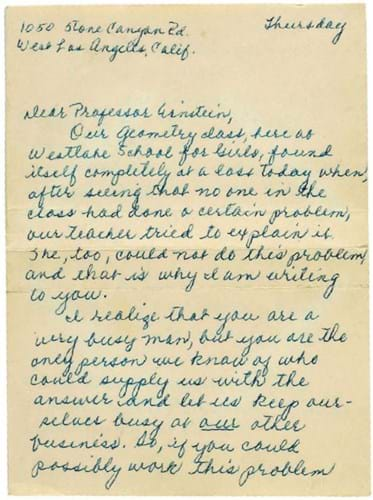
Letter to Albert Einstein about a maths problem and reply from him, $17,000 (£13,400) at Bonhams New York.
Faced with a seemingly intractable geometry problem, Johanna Mankiewicz, a student at the Westlake School for Girls in Los Angeles, had written a letter on May 12, 1952, to a man she guessed might be able to help.
Addressing the note to Albert Einstein at Princeton, New Jersey, she included an explanation of the problem alongside the request…“I realize that you are a very busy man, but you are the only person we know of who could supply us with the answer …, I think you will agree it is the hardest thing - when our own teacher couldn’t do it!”
While leaving Johanna and her classmates to complete the problem itself, a 73-year-old Einstein did indeed respond in person with a mathematical diagram of the problem, and a three-line explanation on how to derive the solution.
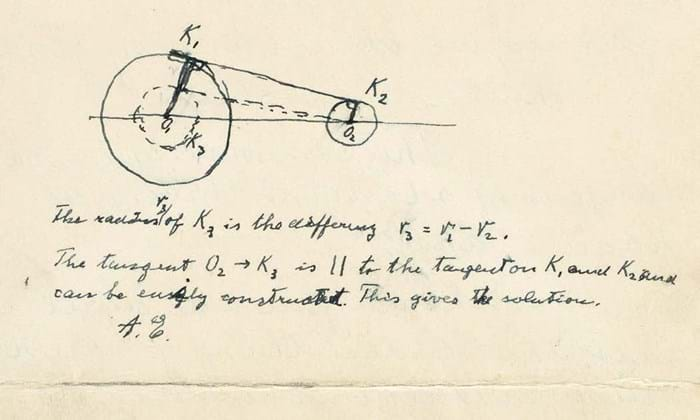
Letter to Albert Einstein about a maths problem and reply from him, $17,000 (£13,400) at Bonhams New York.
It didn’t take long for the story to get out.
Mankiewicz, the daughter of Citizen Kane screenwriter Herman Mankiewicz, was soon interviewed by both the New York Times and the Los Angeles Times.
There was also an unlikely twist. A high school teacher in Ohio, Harold Lee, as well as a Beverly Hills dentist and accomplished amateur mathematician, Leon Bankoff, both stepped forward to declare that Einstein’s solution was incorrect. In publishing the dentist’s protest, the LA Mirror quipped “Doctor Albert Einstein had better concentrate on discovering theories of nuclear fission and winning Nobel prizes…”
This charming Einstein autograph came for sale for the first time by descent from Johanna Mankiewicz at the Bonhams New York online sale of Fine Books & Manuscripts. When the sale closed on May 4, bidding had reached $17,000 (£13,400).


